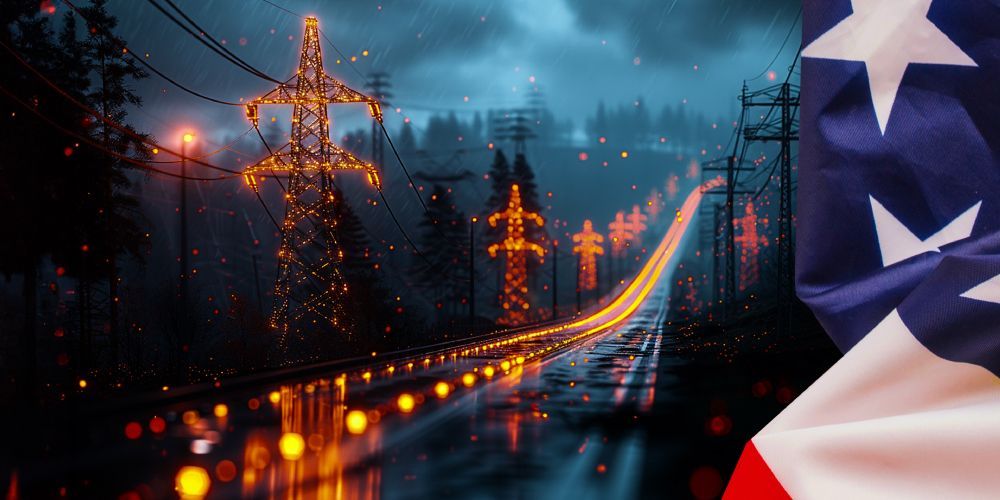Experiencing a Texas power outage can be frustrating and alarming, especially when you depend on electricity for your daily activities and business operations. With rolling blackouts in Texas becoming more frequent, understanding the causes and potential solutions is crucial. It is also worth noting that ERCOT also raised the concern that Texas might face rolling blackouts in August.
Widespread electricity outages during extreme weather events, such as the 2021 winter storm, are uncommon in Texas. These events often reveal the vulnerabilities in the Texas electric grid and emphasize the need for proactive measures to ensure a stable and reliable electricity plan. Whether you are a resident concerned about your home's safety or a business owner worried about operational disruptions, staying informed is your first step toward preparedness.
The Texas electric grid operates uniquely compared to other states, which brings its own set of challenges and opportunities. By exploring the reasons behind these outages and understanding the grid's structure, you can better appreciate the complexities of the outages and advocate for meaningful changes. This knowledge empowers you to take steps that can make a difference in your community and business.
In the following sections, we will explore the causes of power outages, the challenges in addressing them, and the proposed solutions for future stability. This article aims to equip you with practical insights and tips to navigate the unpredictable landscape of Texas's electricity supply and protect your interests effectively. More importantly, we will walk you through the various problems leading to power outages and how you can safeguard yourself.
What is the Texas Electric Grid and Why Does it Matter to You?
To fully grasp the issues surrounding power outages in Texas, it's essential to understand how the Texas electric grid operates. Unlike other states, Texas has its own power grid, managed primarily by the Electric Reliability Council of Texas (ERCOT).
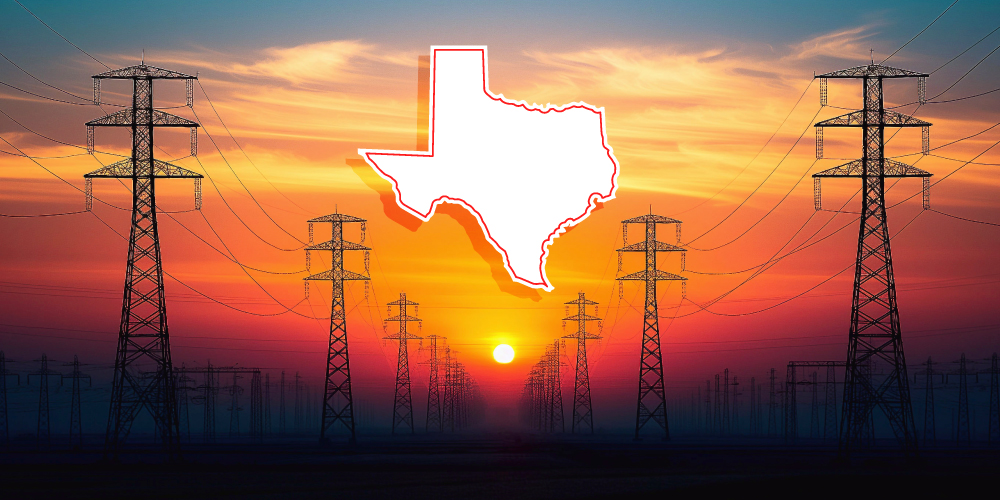

This unique structure allows Texas to rely mainly on its internal resources to generate and distribute electricity, creating strengths and weaknesses in its system. Understanding this grid's structure and operation will help you take proactive measures to ensure stability.
That's not all. Having a clear understanding of the Texas electric grid also lets you get a general idea of the electricity trends in the state. This information could be valuable in identifying potential risks to your electricity supply and your preparedness for an outage.
ERCOT and its Role in Electricity Generation and Supply
ERCOT oversees the flow of electric power to more than 26 million Texas residents and businesses, covering about 90% of the state's electric load. It manages the grid's reliability, oversees market operations, and coordinates the flow of electricity from power plants to consumers.
The grid includes various power generation sources, such as natural gas, coal, nuclear, wind, and solar. This mix helps balance the demand and supply of electricity. However, this diversity introduces complexities in managing intermittent renewable sources like wind and solar.
A vast network of high-voltage transmission lines carries electricity from power plants to substations, from where it travels to homes and businesses via lower-voltage distribution lines. This network is designed to handle the state's high electricity demands but can be vulnerable to extreme weather and technical failures.
You can see that you depend on the grid and all its transmission systems to get electricity in your Texas home or business. Even a small break in this long circuit can limit your access to electricity. Furthermore, the deregulated market in Texas implies that you have the power of choice when it comes to electricity providers and plans.
Unique Aspects of ERCOT and Comparison With Other State Grids
Unlike most other state grids, which are part of larger regional grids regulated by the Federal Energy Regulatory Commission (FERC), ERCOT operates independently within Texas. This independence allows for custom regulations and policies but limits the ability to import electricity during emergencies. The following are some of the other unique aspects of ERCOT's grid compared to other state grids.
Local Control and Flexibility
ERCOT's autonomy allows it to implement state-specific solutions and respond quickly to local conditions. However, this also means that Texas must maintain sufficient generation capacity and infrastructure to meet its needs without relying on external support.
Market Operations
ERCOT manages a competitive electricity market where power prices depend on supply and demand. This market-driven approach encourages efficiency and innovation but can lead to price volatility during peak demand or supply shortages.
As you can see, understanding the structure and operation of the Texas electric grid is crucial for identifying potential weaknesses and advocating for improvements. This foundational knowledge will provide valuable context and clarity as you explore the causes and solutions for Texas power outages.
Recent Texas Power Outages and Their Impacts
Power outages in Texas have been a recurring issue, affecting millions of residents and businesses. Understanding the specifics of these events helps you prepare better and advocate for necessary changes. Here, we explore three significant recent outages and their impacts on Texan lives.
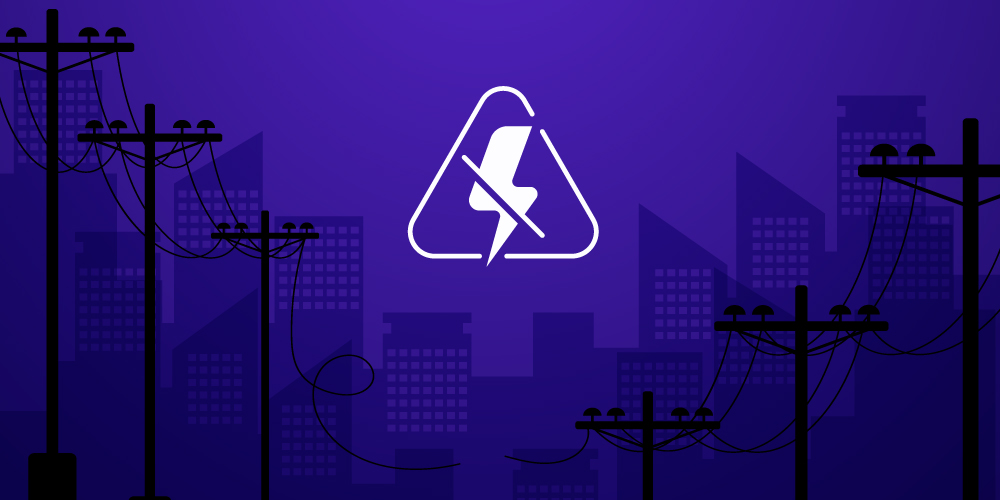

The 2021 Winter Storm
In February 2021, Texas experienced an unprecedented winter storm that led to widespread power outages. The electricity grid struggled to meet the high demand as temperatures plummeted, and many power plants went offline due to freezing conditions. As you can imagine, the outage caused a significant impact on civilian lives and resulted in the following.
- At the peak of the outages, more than 4.5 million homes and businesses lost their electricity. The blackouts lasted several days and affected large parts of the state.
- Businesses suffered significant financial losses due to halted operations, with the total economic impact estimated in the billions. The freezing conditions also damaged infrastructure, increasing repair and recovery costs.
- At least 57 deaths were directly attributed to the storm, primarily due to hypothermia and carbon monoxide poisoning, as people used unsafe methods to stay warm.
- The power loss disrupted water treatment plants, leading to water shortages and boil water notices across the state.
Spring 2023 Severe Storms
In the spring of 2023, severe storms hit Texas, causing significant power disruptions. The intense weather included high winds, tornadoes, and heavy rainfall. The power grid was again under tremendous stress, leading to power outages in several locations. Below, we discuss the most significant impact of the power outage in spring 2023.
- Widespread outages with more than 500,000 customers losing power across the state, highlighting the grid's vulnerability to extreme weather
- The outages disrupted businesses, leading to financial losses, particularly in the manufacturing and service sectors.
- Downed power lines and flooding created hazardous conditions, complicating recovery efforts and endangering lives.
Hurricane Beryl 2024
Most recently, Hurricane Beryl in July 2024 caused significant disruptions to the Texas power grid. The storm's high winds and heavy rainfall led to widespread outages, particularly in coastal areas. Many Texans are still struggling from the impact of Hurricane Beryl. The long-reaching effects on the Texas electricity grid include the following.
- At its peak, over 2 million customers in the Houston area were without power. Businesses in affected areas experienced downtime and damage, leading to financial setbacks.
- At least 36 deaths resulted from the storm, including those related to power outages and the ensuing heat. Many residents faced hazardous conditions due to downed power lines and flooding.
- Prolonged outages affected daily activities and recovery efforts, with thousands of residents still without power more than a week after the storm.
Top Reasons for Power Outages in Texas
Power outages in Texas can occur for various reasons. Understanding the root causes helps develop effective strategies to mitigate these outages and ensure a more reliable power supply. This section will break down the primary causes of power outages into specific subcategories to address the issue comprehensively.
Texas's unique electric grid structure and its diverse climate make it particularly susceptible to outages. Severe weather events, aging infrastructure, human errors, and emerging cybersecurity threats play a role in the state's power reliability challenges. Below, we discuss the various primary reasons for power outages in Texas.


Weather-related Causes
Weather events are among the most significant contributors to power outages in Texas. Severe weather, including hurricanes, tornadoes, and winter storms, can cause extensive damage to power infrastructure. The 2021 winter storm is a prime example of how extreme weather can devastate the grid.
The storm caused temperatures to drop significantly, leading to frozen power plants and natural gas pipelines. It resulted in widespread power outages affecting millions of residents and businesses. The storm highlighted the grid's vulnerability to cold weather and the need for better preparedness and infrastructure upgrades to handle such events.
Technical Failures
Technical issues within the grid can also lead to power outages. Common technical failures that can potentially lead to power outages in Texas include the following.
Equipment Failures
Aging infrastructure and equipment can fail under stress, especially during peak demand. Transformers, circuit breakers, and other critical components may malfunction, causing localized or widespread outages.
Transmission Line Issues
Problems with transmission lines, such as line faults or failures, can disrupt the flow of electricity from power plants to consumers. Regular maintenance and upgrades are essential to prevent these issues.
Human Factors
Human error and mismanagement can significantly impact the reliability of the power grid. In fact, the likelihood of a human error is far greater than that of an equipment error. Some common human errors that can lead to outages are as follows.
Operational Mistakes
Grid management errors, such as incorrect load forecasting or improper equipment handling, can lead to outages.
Lack of Preparedness
Insufficient planning and preparedness for extreme weather events or other emergencies can exacerbate the impact of outages. The 2021 winter storm, for instance, revealed gaps in emergency response and preparedness within the grid management.
Cybersecurity Threats
As the power grid becomes more interconnected and reliant on digital technology, the risk of cyber threats increases. Potential cyber threats to the Texas energy supply include the following.
Cyber Attacks
Hackers can target the grid's control systems, causing disruptions or outages. These attacks range from malware infections to sophisticated, coordinated assaults on critical infrastructure.
Data Breaches
Unauthorized access to grid management systems can lead to data breaches, potentially compromising the security and stability of the power grid.
Top Concerns and Challenges in Addressing Power Outages
Addressing power outages in Texas presents several significant challenges that require a holistic approach. These challenges span technological, economic, political, and social domains and contribute to the complexity of finding and implementing practical solutions.
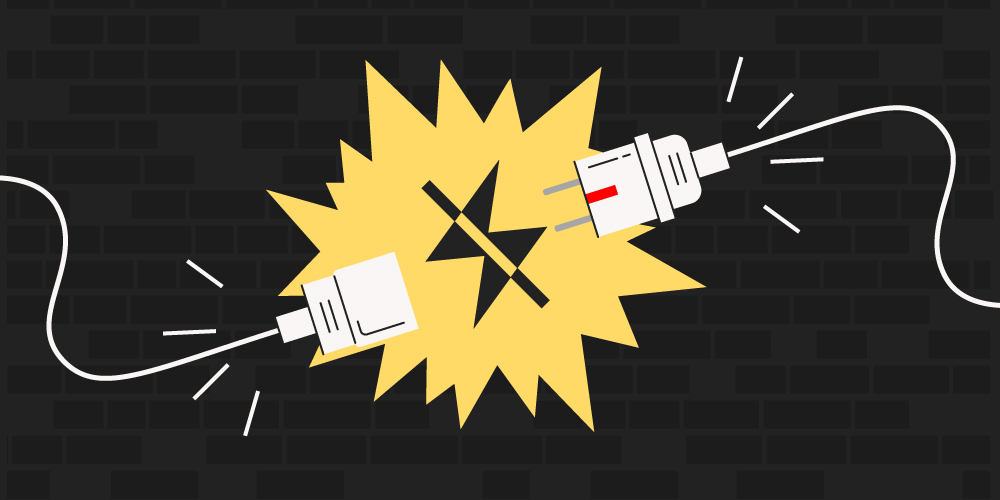

Technological Limitations
Current technology poses several limitations in preventing power outages. While advances in grid management and renewable energy integration have improved overall efficiency, significant gaps remain in the system, such as the following.
Aging Infrastructure
Much of Texas's power grid infrastructure is outdated. This means the existing system can not handle the increasingly extreme weather conditions. For example, during the 2021 winter storm, many power plants and pipelines froze, leading to widespread outages. Upgrading these systems to be more weather-resilient is essential but challenging and costly.
Intermittent Renewable Energy
While renewable energy sources like wind and solar are crucial for a sustainable future, their intermittent nature can make grid management more complex. Integrating these sources requires advanced technology and storage solutions, which are still evolving. In other words, they have yet to prove themselves reliable.
Economic Constraints
Financial challenges significantly impact the ability to upgrade infrastructure and implement solutions to prevent power outages. Following are some significant economic constraints in addressing Texas electric outages.
Regulatory Complexity
The Texas power grid operates independently from the federal grid, managed by ERCOT. This unique structure provides flexibility but also introduces regulatory complexities. Coordinating policies and standards across local, state, and federal levels can take time and effort, slowing down the implementation of necessary changes.
Political Will
Addressing power outages requires strong political commitment. Legislative measures to improve grid resilience often need to be revised due to competing interests and priorities. Building consensus among stakeholders is essential for passing effective regulations.
Public Awareness and Engagement
Public awareness and engagement are crucial for effectively addressing power outages. Let's examine how public awareness and meaningful engagement are involved in this case.
Awareness of Risks
Increasing public understanding of the risks associated with power outages and the importance of grid resilience can drive support for necessary measures. Events like the 2021 winter storm and Hurricane Beryl are stark reminders of these risks, highlighting the need for ongoing public education.
Community Participation
Engaging communities in preparedness and response efforts is vital. Encouraging energy conservation during peak times and promoting the adoption of home resilience measures, such as backup generators and home insulation, can mitigate the impacts of outages.
Impact of Power Outages on Residents and Businesses
Power outages in Texas can have far-reaching consequences for both residents and businesses. Understanding these impacts is crucial for preparing and mitigating future disruptions. Here, we explore power outages' economic, health and safety, environmental, and social implications.


Economic Concerns
Power outages can significantly affect the economy, particularly for businesses that rely on continuous power to operate effectively. Outages can halt production, disrupt services, and lead to substantial financial losses. For instance, during the 2021 winter storm, businesses across Texas faced billions in damages due to operational downtime and spoiled goods.
It is also worth considering conducting a self-assessment of your electricity needs to find the ideal provider and plan for you. To ensure relatively steady electricity rates in Texas, you must choose your provider and plan carefully. Tools like EnergyPricing.com can help you browse for electricity rates by ZIP code and seamlessly switch to a new plan. After all, ensuring a steady average household electricity consumption also involves choosing the right provider and plan. Thanks to Texas energy deregulation, you have the power to choose a provider that best meets your economic concerns.
Public Health and Safety
Power outages pose significant risks to public health and safety and affect your daily life. Hospitals and clinics rely heavily on electricity to power critical medical equipment. Outages can jeopardize patient care, particularly for those dependent on life-sustaining devices.
Furthermore, safety becomes a primary concern during outages. Dark streets, inoperable traffic lights, and non-functional security systems can increase crime rates and accidents. During prolonged outages, residents may also need help with basic needs such as cooking, heating, and communication.
Environmental Issues
The environmental impact of power outages can often aggravate existing issues. For instance, many residents and businesses turn to diesel generators during outages, which emit pollutants that degrade air quality. That's not all. Spoiled food due to refrigeration failure leads to significant waste.
Similarly, halted industrial processes can result in wasted raw materials. Power outages can disrupt efforts to reduce carbon footprints. For instance, the inability to use electric vehicles or implement energy-saving measures can hinder progress in addressing climate change.
Social Implications
Outages affect communities and vulnerable populations in various ways, often exacerbating existing inequalities. Social cohesion can suffer as people become more isolated without power. Besides that, community centers, schools, and other gathering places close, reducing social interaction.
Besides that, vulnerable groups, including the elderly, low-income families, and those with medical conditions, are disproportionately affected. Ensuring public awareness and engagement is critical to support these populations during outages.
Practical Solutions to Ensure Reliable and Stable Electricity in Texas
Ensuring the stability and resilience of the Texas power grid requires a comprehensive approach. Here, we outline essential strategies to enhance the grid's performance.


Infrastructure Development
Investing in infrastructure upgrades is crucial. Modernizing aging power plants, transmission lines, and distribution networks can significantly reduce the risk of outages. Implementing innovative grid technologies allows for real-time monitoring and quicker issue resolution, enhancing overall reliability.
Diversification of Energy Sources
A diverse energy mix is vital for preventing outages. Increasing the share of renewable energy sources like wind and solar reduces dependence on a single source. For reliable and cost-effective energy plans, tools like EnergyPricing.com can help you compare options personalized to your needs.
Knowing how to switch electricity providers and the best time to shop for electricity in Texas can help you get the best rates and services. Tools like EnergyPricing.com enable you to browse various providers and plans to find the lowest electricity rates in Houston, Dallas, and other Texas cities.
Grid Decentralization
Decentralizing the grid and promoting local energy solutions enhance resilience. Developing microgrids and encouraging distributed generation reduce the strain on transmission networks and improve reliability. This approach supports integrating renewable energy locally, ensuring continuous power supply during widespread outages.
Improved Forecasting and Planning
Better weather forecasting and grid management are essential. Utilizing advanced meteorological models to predict extreme weather events allows for proactive preparation. Regular scenario planning exercises help identify vulnerabilities and develop response strategies, minimizing the impact of outages.
Community and Stakeholder Engagement
Engaging the public and private sectors is crucial for grid stability. Public awareness campaigns educate about energy conservation and preparedness. Understanding how electricity bills work can help consumers make informed decisions and reduce costs.
Emergency Preparedness
Developing comprehensive emergency plans ensures all stakeholders are prepared to act swiftly during outages. Implementing resilience measures like backup power systems and infrastructure hardening reduces the duration and impact of outages. Encouraging residents to install backup generators and improve home insulation enhances individual preparedness and safety.
Summary of Key Points
Understanding the Texas electric grid's unique structure and challenges helps advocate for improvements and make informed decisions about energy consumption and providers. Addressing power outages involves tackling technological limitations, economic constraints, and regulatory hurdles. Upgrading infrastructure and integrating renewable energy are crucial steps that require substantial investment and support.
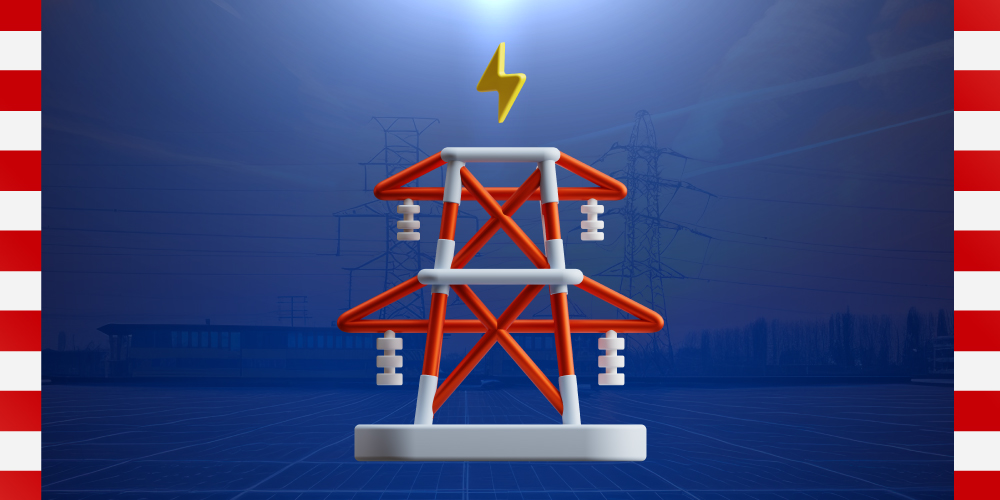

The impact of power outages is complex and long-reaching, affecting the economy, public health, and the environment. Tools like EnergyPricing.com can help you compare energy plans and manage costs effectively by choosing an ideal provider and a personalized plan. You can use such tools to find the best electricity rates in Dallas and other Texas cities or view providers by your local ZIP code. Staying informed about Texas electricity trends and participating in community engagement can help you prepare for sudden outages. Furthermore, understanding how to lower electric bills and making proactive decisions will help you navigate the evolving energy landscape.
Texas Electric Grid Power Outage: FAQs
Why does Texas have its separate power grid, and how does it affect power reliability?
Texas operates its own power grid, managed by the Electric Reliability Council of Texas (ERCOT), which covers about 90% of its electric load. This independence allows for custom regulations and policies. However, it also means Texas cannot easily import electricity from other states during emergencies, which can lead to vulnerabilities.
What are the leading causes of power outages in Texas?
Power outages in Texas are caused by several factors, such as severe weather events, technical failures, and human errors. Weather-related causes can lead to extensive damage to infrastructure. Technical failures often involve aging equipment and transmission line issues. Understanding these causes helps in developing strategies to prevent future outages.
How can I prepare for power outages caused by extreme weather in Texas?
First, you must assemble an emergency kit with essentials like water, non-perishable food, flashlights, and a first-aid kit. You can also invest in a backup generator to maintain power during outages. Improve your home's insulation to retain heat during winter and keep cool during summer while monitoring weather forecasts about potential outages.
How can I find the best electricity rates in my area?
To find the best electricity rates in Houston, Dallas, or any other Texas city, use comparison tools like EnergyPricing.com, which allows you to compare electricity rates by ZIP code. These tools help you find plans that suit your needs and budget. It's important to review your options regularly, especially when the electricity demand is lower.
Are there any ways to improve the reliability of the Texas power grid?
Various measures can enhance the reliability of the Texas power grid. These include upgrading aging infrastructure to withstand extreme weather conditions, increasing the use of renewable energy sources like wind and solar, and promoting local energy solutions through microgrids. Better weather forecasting and grid management are also crucial.
How does Texas energy deregulation benefit consumers?
Texas energy deregulation allows consumers to choose their electricity providers, fostering competition among providers to offer better rates and services. This competition can lead to lower electricity rates and more options for consumers. This flexibility is particularly beneficial in cities like Houston, where electricity rates vary significantly.
What are the economic impacts of power outages on businesses in Texas?
Power outages can have significant economic impacts on businesses, including operational downtime, increased costs for backup power solutions, and revenue loss. Businesses reliant on continuous power are particularly vulnerable to these disruptions. Understanding the economic risks can help companies to plan for contingencies and resilience measures.
How can I stay informed about potential power outages in Texas?
Staying informed about potential power outages involves monitoring weather forecasts, subscribing to alerts from your electricity provider, and reading local news sources. Understanding Texas electricity trends can also help you anticipate periods of high demand. Being proactive in your energy management and preparedness can minimize the impact of outages.
What are the environmental impacts of power outages in Texas?
Power outages can aggravate environmental issues, such as increased pollution from diesel generators used as backup power sources. Spoiled food due to refrigeration failure leads to significant waste and halted industrial processes can result in wasted raw materials. Additionally, power outages can disrupt efforts to reduce carbon footprints.
What role does public awareness play in addressing power outages in Texas?
Public awareness is crucial for effectively addressing power outages. Educating the public about the risks associated with outages and the importance of grid resilience can drive support for necessary measures. Engaging communities in these efforts can lead to better preparedness and a more coordinated response during outages, reducing their impact.

